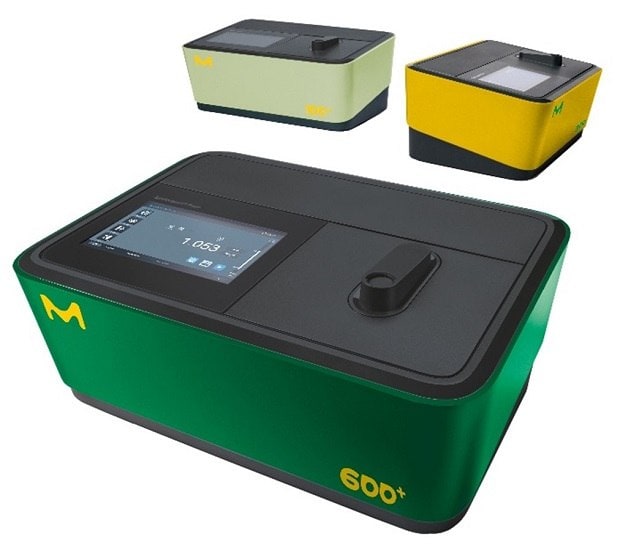Photometric Determination of Ammonium in Manure using Indophenol Blue
Abstract
This protocol describes the photometric determination of ammonium in manure using the indophenol blue method, utiliizing Spectroquant® test kits. Ammonium is extracted and made to react with hypochlorite ions in an alkaline solution and phenol to produce a blue indophenol derivative. This procedure allows for the accurate assessment of ammonium levels for agricultural applications.
Section Overview:

Spectroquant® spectrophotometers - Prove 100 plus, Prove 300 plus, & Prove 600 plus
Introduction
Ammonium (NH4+) is one of the most important sources of nitrogen for plant nutrition and it is formed with the mineralization of decomposed organic matter1. Research also has established that ammonium is the naturally preferred source of nitrogen for plant growth2. With increasing demand for organic food products globally, farmers are resorting to the use of compost and manure. While ready-made ammonium fertilizers have defined concentration of the cation and related compounds in them, it is important to analyze composts and manure for their accurate concentration of ammonium. For, early phases of decomposition accounts for loss of nitrogen as ammonia, and there is natural loss of ammonium as the compost manure matures3. Excess ammonium has also been reported to be toxic in higher plants4.
This application note details a photometric ammonium test method for manure samples, using the indophenol blue method. Post the sample extraction and in a strongly alkaline solution, ammonium nitrogen is present almost entirely as ammonia, which reacts with hypochlorite ions to form monochloramine. This in turn reacts with a phenol compound to form a blue indophenol derivative that is determined photometrically.
Reagents, Instruments and Materials
Ammonium Test Kits/Reagents
For the measurement, one of the following Spectroquant® test kits is necessary:
- Spectroquant® Ammonium Cell Test (1.14544)*
- Spectroquant® Ammonium Cell Test (1.14559)
- Spectroquant® Ammonium Test (1.14752)
- Spectroquant® Ammonium Test (1.00683)
*not compatible with Move 100
Instrument(s) & Devices
For the measurement, one of the following Spectroquant® photometers is necessary:
- Spectroquant® VIS Spectrophotometer Prove 100 Plus (1.73026)
- Spectroquant® UV/VIS Spectrophotometer Prove 300 Plus (1.73027)
- Spectroquant® UV/VIS Spectrophotometer Prove 600 Plus (1.73028)
- Spectroquant® Colorimeter Move 100 (1.73632)
Also, legacy systems
- Spectroquant® Spectrophotometer Prove 100/300/600
- Spectroquant® Photometer NOVA 30/60/60A
Software for Data transfer
- Optional Spectroquant® Prove Connect to LIMS software package (Y.11086) to transfer your data into an existing LIMS system.
Instrument Accessories
- Rectangular cells 10 mm (1.14946) and/or
- Rectangular cells 20 mm (1.14947) and/or
- Rectangular cells 50 mm (1.14944)
Other Reagents and Accessories
- Water for analysis (1.16754)
- Membrane filter with 0.45 µm pore diameter
- Folded filter
Experimental Procedure
Sample Preparation
- Put 10 mL of the sample into a 1000 mL volumetric flask, fill up to volume with water for analysis, and mix.
- After the solid parts have settled, take 10 mL of the supernatant solution and, mixed with a spatula–tip full of charcoal activated for soil tests, put it into a 50 mL volumetric flask and fill up to volume with water for analysis.
- Before determination filter the charcoal through a folded filter. In case the solution remains cloudy, filter again through a membrane filter.
Analysis
Determine with one of the above-mentioned test kits.
Calculation
Ammonium content in mg/kg NH4+ = analysis value in mg/L NH4+ x 2000
See more applications for photometry at Protocols and Application Notes
References
Per continuare a leggere, autenticati o crea un account.
Non hai un Account?